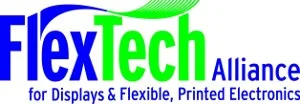This well-known aphorism, often attributed to Thomas Jefferson, is often used by conservative politicians here in the United States as a way of explaining many of their spending cuts and policy decisions.

Although selectively applied, as these same politicians tend to have no problem increasing spending for the military, inserting government controls related to certain social situations – like gay marriage and pro-choice decisions, the platform mostly rails against “government hand-outs”, also called “entitlement programs”. Again, there’s a selectivity when it comes to defining government hand-outs – as enabling the super-wealthy to enjoy advantaged tax positions, providing tax support for the extremely profitable oil/gas industry, de-regulating big banks to the point of enabling criminal behavior – such things are blanketed with notions about job stimulation and market-based economics.
OK – the above political commentary is a bit off the topic of printed electronics – except when you consider government spending used for the purpose of enhancing the nation’s infrastructure. Put simply, because of US political winds over the past three decades, government investment in infrastructure has been poor, at best. Republican political leaders, apparently forgetting the powerful role played by government investment in the nation’s railways, automobile industry, interstate highway system, NASA, support for the early semiconductor industry, etc., etc., etc…, have backed away from cooperating with industry to promote the nation’s interests.
As such, the US essentially has no meaningful part in the multi-billion dollar display industry. A few companies do build components and equipment to support the display industry – but even in those situations, the vast majority of the devices are actually manufactured in Asia, and not in the US. With regard to the display industry, the role of the US seems relegated primarily to some university-level research and development and mass consumption of finished display-related goods that are manufactured in Asia.
Some will argue that the United States made a good decision by largely staying out of the display industry. Such analysts claim that the display industry has yet to see a cumulative profit – with Asian investors losing billions in their efforts to develop, produce, and commercialize displays.
I submit that such gloomy assessments of the display industry are essentially wrong. If the entire food chain associated with the display industry is evaluated, (from suppliers of base materials, infrastructure support, transportation, to end-product sales and service), there is little doubt in my mind that the display industry has been highly profitable.
More importantly, when it comes to national interests, decisions in Japan, Korea, Taiwan, and China, investments in the display industry, based on government support to enable and grow the industry, have assuredly benefited those nations at the macro level. Providing highly skilled employment opportunities, creating academic programs to train top-level engineers in the field, enhanced infrastructure development related to water systems, electricity, manufacturing know-how, spin-off technology developments, etc. There is simply no way that at the national level that the countries that invested in display technologies will ever be able to acknowledge their investment was “unprofitable”.
There is a bright spot in this story related to US-based display technologies – and that’s called the FlexTech Alliance. While not a government group, the FlexTech Alliance is an industry association focused on growth, profitability, and success throughout the manufacturing and distribution chain of flexible, printed electronics, and displays. By facilitating collaboration between and among industry, government, and academia, FlexTech Alliance develops solutions for advancing these technologies from R&D to commercialization.
While the US largely missed out on being a significant part of the LCD manufacturing industry, there are some indications that maybe it’s still not too late to participate in the emerging industry related to printed electronics.
FHE MII Proposal
Based on a concept paper, the FlexTech has been invited by the Department of Defense to submit a full proposal in response to the Federal Opportunity Announcement for the creation of a national Flexible Hybrid Electronics – Manufacturing Innovation Institute (FHE MII). With the Final Proposal due on June 19, FlexTech has been working to plan, co-ordinate, and successfully outline a vision for an FHE Institute with broad participation across industry sectors and with all partners who wish to be included. The group envisions the Institute as an organization which co-ordinates the capabilities already in place with additional efforts at demonstrators, commercialization, standards, education and workforce development – all focused on moving proven concepts into volume manufacturing. The Department of Defense plans to announce the awardee on July 24th.
The FlexTech Alliance additionally spotlighted some recent project reports submitted by their member companies:
- 4D Technology: 4D has launched a product based on the work done for FlexTech for an inspection unit for roll-to-roll processing. The ‘FlexCam’ has had an excellent reception in the marketplace, proving the projects value to the flexible electronics community. The product features 0.5nm vertical resolution, and 2 micron lateral resolution. It boasts a compact design and modules can be stacked to fit a full meter width. A single Ethernet cable provides power and data transmission to the unit for on-board processing. The CAMM, Vitriflex and DuPont Teijin Films assisted the team at 4D with testing and materials.
- Kent Display, Inc.: This project has a goal of designing a low-cost, fully-functional, flexible, product combining a digitizer with palm rejection, roll-coated LCD, internal memory, low-power rechargeable battery and wireless communications capability. This project is well underway.
- Clemson University: The project with Clemson is for a large-area energy harvesting device via roll-to-roll print processes. The patterns have been designed and printed via flexography with a flatbed screen. Testing is being done at PARC on its RF characteristics and components are being attached. Challenges in ink thickness, antenna dimensions, multilayer printing and printed diodes are being studied and overcome.
- PARC, a Xerox Company: Progress is ahead of schedule on the project for Digital Fabrication of Flexible Large-Area Hybrid Sensing Systems. This project introduces new design methodology, automated fabrication, electrical interconnects and system and circuit design to flexible sensor platforms for both structural health monitoring and multiple sensor systems. Look for the final report on testing and validation in the near future.
While none of these projects are anywhere close to the scope of NASA or the Interstate Highway System, at least there are few small examples in the United States that point to a government that is willing to invest in fundamental infrastructure development. “The best government is that which governs least” is a catch phrase that conservative politicians in recent years have mistakenly used to suggest the government should not be involved at all in supporting infrastructure – to the profound detriment of American industry. Perhaps the tiny steps underway at places like the FlexTech Alliance will succeed in bringing technology and production back to the United States. – Mark Fihn
(This article was previously published in Veritas et Visus‘ Flexible Substrate newsletter.)

